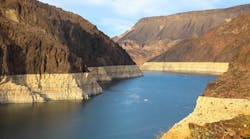Earlier this school year, my son brought home his report card and had a few Bs in classes that I knew he could get As in with his best effort. I challenged him and said, “is this really the best you can do, or can you do better than this?” My son agreed he was a better student and has since turned those grades around and is performing at a level closer to his actual potential. To make this turnaround, he had to take stock of how he was performing and make changes. We can do the same and take stock of how our sector is doing and reflect on our capacity to improve.
How is the stormwater sector doing?
The National Urban Runoff Program that ran from 1978 to 1983 provided the first definitive information that urban runoff pollution was a significant issue, and these findings led to the development of the Municipal Separate Storm Sewer System (MS4) program to be established as part of the 1987 Clean Water Act amendments.
In 2008, the National Research Council (NRC) released “Urban Stormwater Management in the United States,” which was the first attempt at a comprehensive view of the stormwater sector. Specifically, this study was asked to consider technical issues, such as monitoring and the effectiveness of best management practices, as well as policy issues. The overall findings of the NRC reports were that “EPA’s current approach to regulating stormwater is unlikely [. . .] to adequately control stormwater’s contribution to waterbody impairment,” and that it is, “very difficult to formulate any definite statements about how successful the implementation of the program is on a national perspective.”
A more recent snapshot of the stormwater sector is from the 2020 and 2022 Water Environment Federation (WEF) MS4 Needs Assessment Surveys. For both surveys, the same question was posed — “Can the Federal MS4 program meet clean water goals in the long-term?” The 2020 responses were divided relatively equally between the answers of “yes”, “no” and “unsure.” In 2022, the plurality of responses was that 41% answered “no” with an additional 20% answering “unsure” — meaning that only 30% of MS4 respondents think that the MS4 program can meet goals sometime in the future.
Another data point is from the American Society of Civil Engineering (ASCE) Infrastructure Report Card. For stormwater’s inaugural debut on the report card in 2021, we received a “D,” and for the 2025 report card released in March, we duplicated this grade.
There is a pattern suggesting there is a lack of confidence that the stormwater sector has made significant progress in meeting the goals of the federal stormwater program and that this trend may continue in the future — unless something changes.
What does MS4 2.0 look like?
Pathways forward include increasing funding at all levels for investment, comprehensive and affordable data on stormwater assets and performance, and policies that are effective at improving water quality and quantity management, yet pragmatic enough to be readily implementable.
Complications exist. For example, the fact that the needs in the stormwater sector represent 18% of the total needs in the overall water sector, but our sector has received less than 3% of State Revolving Fund assistance over the lifetime of the program drives a simple solution — provide additional funding assistance from the federal government to communities who are looking for support. But the fact remains that less than one-third of regulated stormwater communities do not have a stormwater utility, or an equivalent entity dedicated to drive funds locally, and the reasons for this are a complex and varied range.
Improvements in sensors and battery technologies enhance the potential to gather more monitoring data, but a lack of national standards on performance data and stormwater assets limits the ability to make meaningful determinations on the progress being made in the sector. Regulatorily, the focus has been more on process than progress.
Stormwater infrastructure has the potential for increased resilience, flood risk reduction and improved urban greening. To meet this potential, we need to consider shifting our approaches. The MS4 program has not changed much since its inception, and with major changes happening on all fronts in Washington, D.C., this is an opportunity to consider how the MS4 program can be updated to version 2.0. Let’s not miss our chance.
About the Author
Seth Brown
Seth Brown has over 25 years of experience in the water sector and is the Principal and Founder of Storm and Stream Solutions, LLC, a consulting firm providing a range of services from policy and alternative project delivery analysis in the stormwater sector to facilitation and training services focused on stormwater topics. He was the Director of Stormwater Programs at the Water Environment Federation from 2010-2015 and is currently the Executive Director of the National Municipal Stormwater Alliance, which is a 501.c.3 representing stormwater-focused organizations in 24 states across 9 of the 10 U.S. EPA regions with a network that is comprised of over 4,000 MS4s.
Seth has a Ph.D. in civil engineering from George Mason University with a research focus on socio-economic modeling of incentive-based investments of green stormwater infrastructure on private properties. He leads courses in Green Infrastructure and Innovative Water Partnerships at Virginia Tech and the University of Maryland at Eastern Shore and is a licensed professional engineer in the state of Maryland.


